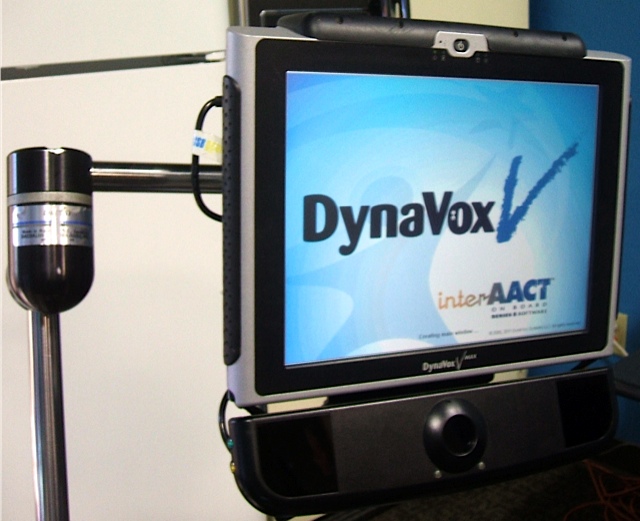
This is the system Alan uses today – DynaVox EyeMax System for eye tracking.
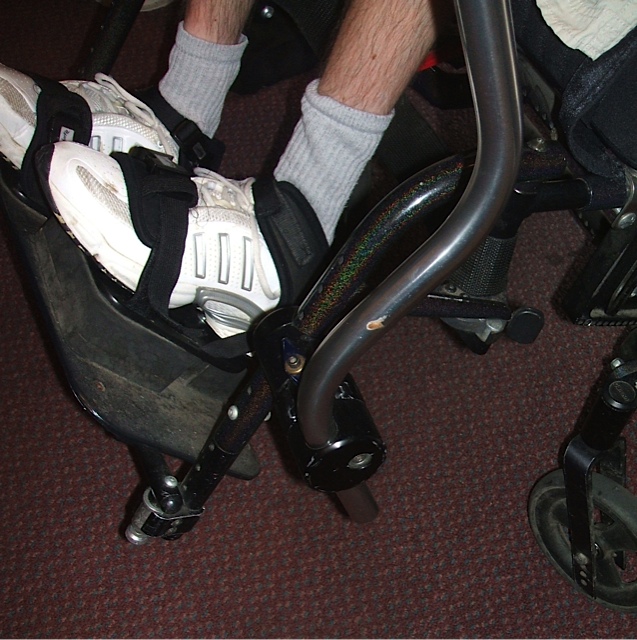 As with Alan’s other systems, his device is mounted to his wheelchair. There is a more secure mount on the market today where the post slips into the frame clamp and then is secured with a lever.
As with Alan’s other systems, his device is mounted to his wheelchair. There is a more secure mount on the market today where the post slips into the frame clamp and then is secured with a lever.
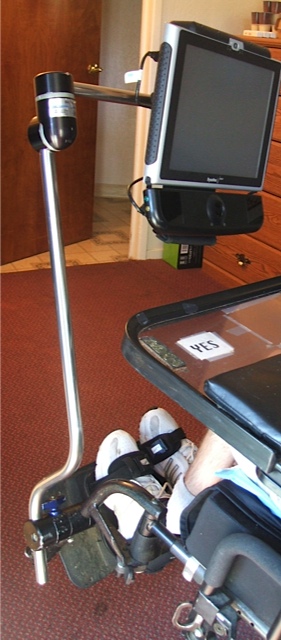 This shows the height and distance of his device from his eyes.
This shows the height and distance of his device from his eyes.
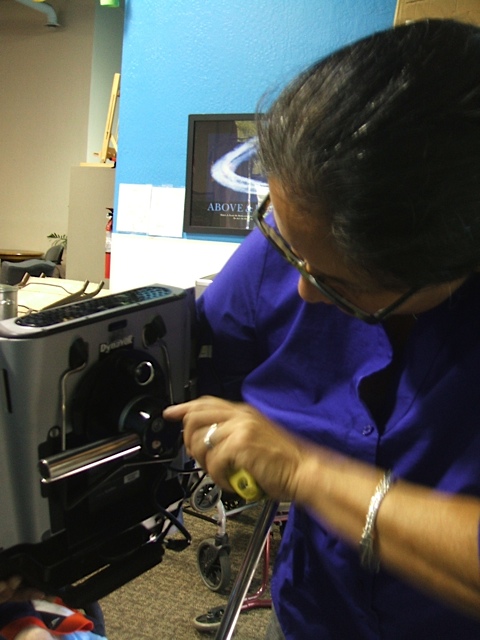
We are having trouble finding the best position for the device that works best for Alan. It’s wise to keep a set of Allen wrenches (hexagonal shape) handy.

Our friend, Karen, went to the day program Alan attends to help make some adjustments. Here she is holding the device and slowly changing the position to pick up his eye movements.
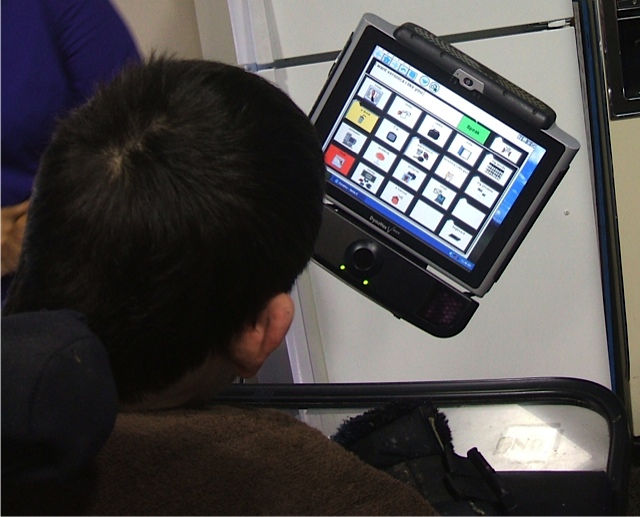
You will see two small green lights at the bottom of the device (EyeMax Accessory). These LEDs will light up when the accessory has a lock on the position of Alan’s eye.
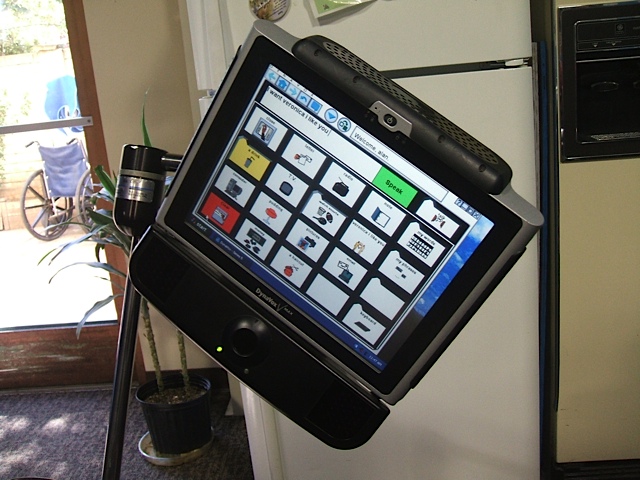
Note we had to angle the device greatly to accommodate the tilt of Alan’s head. You’ll note one green light only, which means the camera is picking up movement of only one eye.
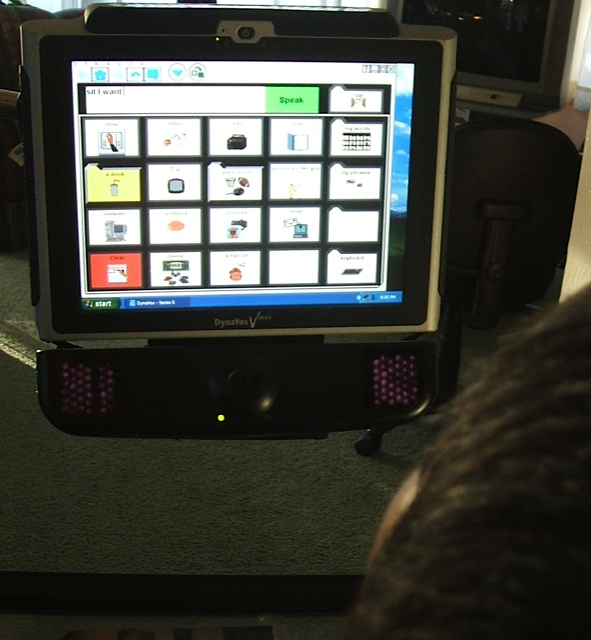
On the EyeMax Accessory you will see purplish areas on the left and right. These are infrared transmitters that help the camera track the movements of Alan’s eyes. The circular part on the EyeMax Accessory is the camera that works with the infrared transmitters to track the eye movements. You will also note there is only on green LED here. That indicates only one of Alan’s eyes is being tracked at this time.
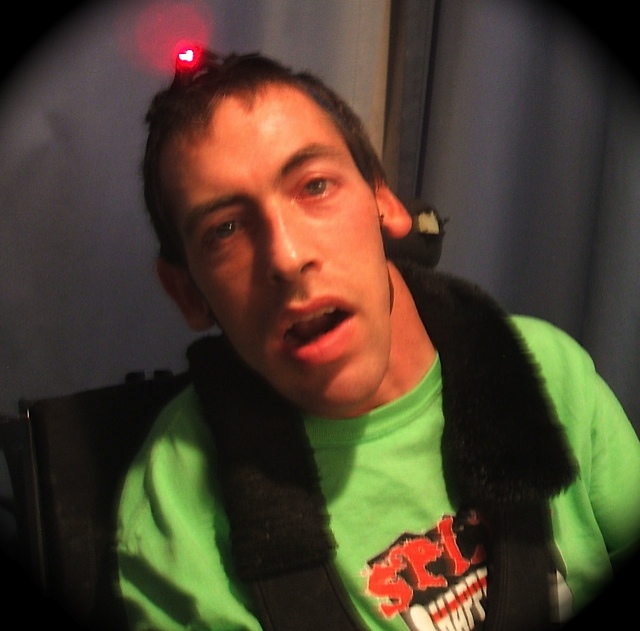
When for whatever reason Alan’s high tech device is not working, we fall back on low-tech communication. Here is a fine point laser designed for hunters to use on their rifles that I fit into an nonroll elastic headband (sorry this picture is blurry but between Alan’s head movements and my camera skills – well, you guessed it – blurry pictures!)
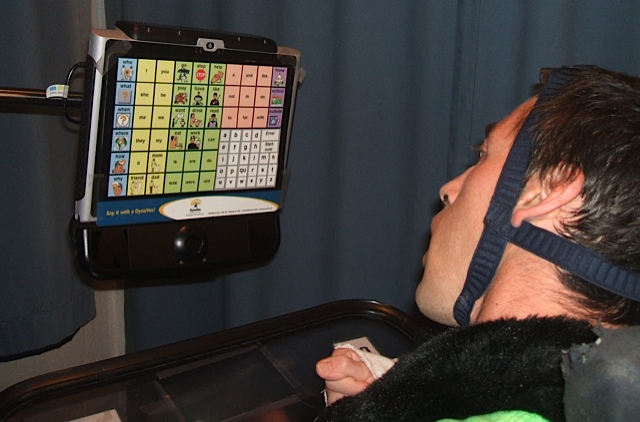
I simply taped a ready-made icon sheet on the front of his non-working device for him to use. Of course there is no voice and the listener needs to stand where he can follow the light beam. As for the headband, I make it so the elastic fits around the shape of his face and under his chin. Then I add a piece that goes around the back of his head and under both ears. I place a little loop with Velcro inside and on the pointer to secure in place.
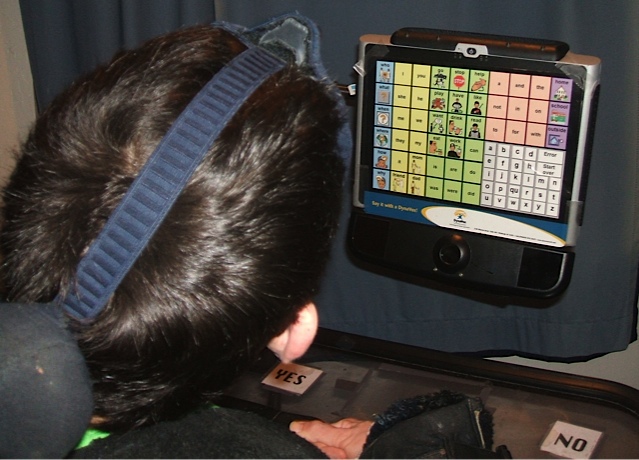
Last I sew a strip of elastic down the center back of his head to prevent the light from slipping forward on his forehead. These are easy to make and seem to work great for Alan. You’ll notice that Alan still uses his yes/no words on his tray. You might be interested in checking out www.abledata.com for more information on assistive technology.


